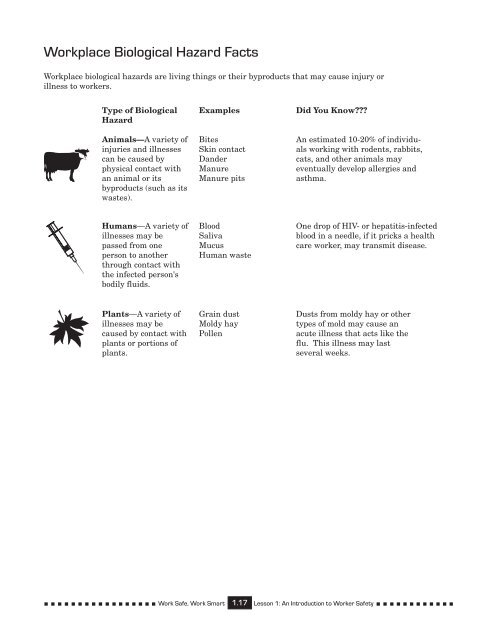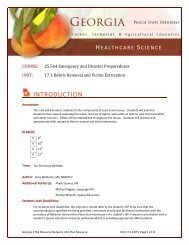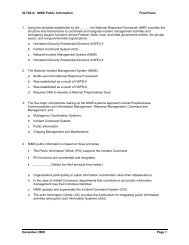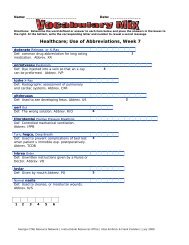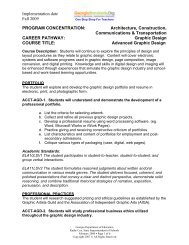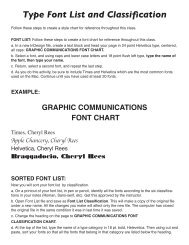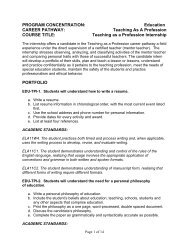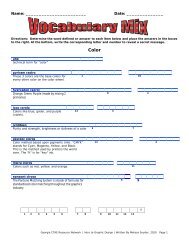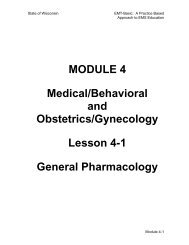WORK SAFE WORK SMART
WORK SAFE WORK SMART
WORK SAFE WORK SMART
Create successful ePaper yourself
Turn your PDF publications into a flip-book with our unique Google optimized e-Paper software.
Workplace Biological Hazard Facts<br />
Workplace biological hazards are living things or their byproducts that may cause injury or<br />
illness to workers.<br />
Type of Biological<br />
Hazard<br />
Animals—A variety of<br />
injuries and illnesses<br />
can be caused by<br />
physical contact with<br />
an animal or its<br />
byproducts (such as its<br />
wastes).<br />
Examples<br />
Bites<br />
Skin contact<br />
Dander<br />
Manure<br />
Manure pits<br />
Did You Know<br />
An estimated 10-20% of individuals<br />
working with rodents, rabbits,<br />
cats, and other animals may<br />
eventually develop allergies and<br />
asthma.<br />
Humans—A variety of<br />
illnesses may be<br />
passed from one<br />
person to another<br />
through contact with<br />
the infected person's<br />
bodily fluids.<br />
Blood<br />
Saliva<br />
Mucus<br />
Human waste<br />
One drop of HIV- or hepatitis-infected<br />
blood in a needle, if it pricks a health<br />
care worker, may transmit disease.<br />
Plants—A variety of<br />
illnesses may be<br />
caused by contact with<br />
plants or portions of<br />
plants.<br />
Grain dust<br />
Moldy hay<br />
Pollen<br />
Dusts from moldy hay or other<br />
types of mold may cause an<br />
acute illness that acts like the<br />
flu. This illness may last<br />
several weeks.<br />
Work Safe, Work Smart<br />
1.17<br />
Lesson 1: An Introduction to Worker Safety


